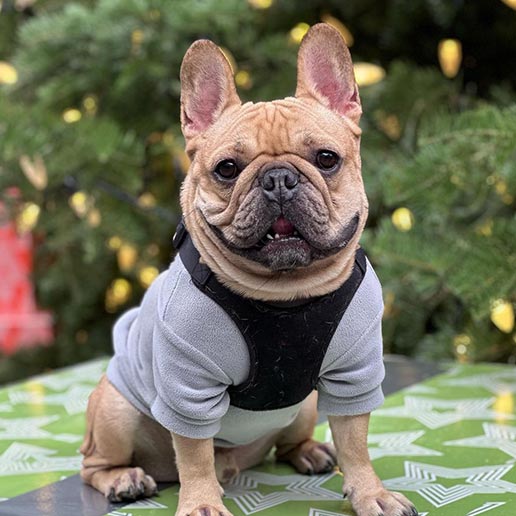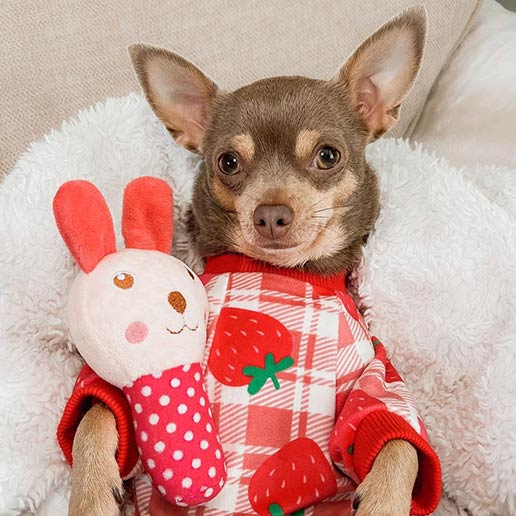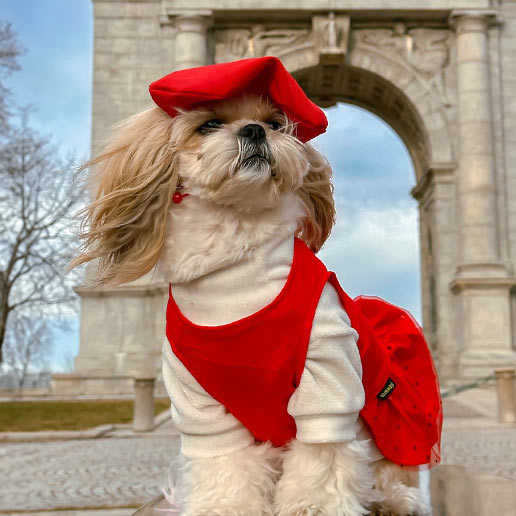How to Stop Your Dog From Pulling on the Leash
One of the small pleasures in life should be walking your dog, not a daily tug-of-war contest. Although leash tugging is a challenge for many pet owners, teaching your dog to walk peacefully next to you will provide a great bonding event. Those daily walks become something you both look forward to you and your pet friend learn to move together as a team. Calm, fun walks are quite feasible with some time and the correct technique; picture stress-free walks in which you both enjoy discovery together!

Key Takeaways
● When your dog pulls, freeze in place until they come back to you, then reward them with treats—this teaches them that pulling gets them nowhere.
● Turn around and walk in the opposite direction whenever your dog pulls, making them follow you instead of leading the walk.
● Try using a calming vest or wrap on your dog during walks—it works like a gentle hug to keep them relaxed and less likely to pull.

● Put your dog in a harness that clips at the chest (not the back), as this naturally turns them toward you when they try to pull ahead.
● Play follow-the-leader games with gentle leash guidance in quiet places first, always rewarding your dog when they stay close to you.
● Use two leashes—one on the collar and one on the harness—to better control pulling, but always reward your dog when they walk nicely beside you.
Why Do Dogs Pull on Leashes?
Natural Instincts and Curiosity
Dogs are lively, naturally curious animals. Their senses explode when you bring them outside. They wish to sniff every tree, hunt after squirrels, or probe that ruckling bush. Many times, this curiosity results in leash pulling as they strive to investigate their surroundings quicker than you can move. Certain dogs also have a considerable prey drive, which drives them to follow interesting smells or chase running animals.
Their natural walk speed is another factor. Many times, dogs find human walking rates too slow. Your walk can become a tug-of-war if they naturally draw to go quicker.

Lack of Training and Consistency
Usually, pulling on the leash results from your dog not knowing appropriate leash behavior. They do not know, without instruction, that the objective is to stroll gently beside you. Additionally confusing your dog is inconsistent training. Let them pull occasionally, for instance, but correct them at other times; they won't know what's expected.
Thrills and Overstimulus
Certain dogs pull just out of excitement. They understood it was time for an adventure the instant you clipped on the leash. Particularly in crowded places like parks or city streets, this enthusiasm might cause kids to become overstimulated. They might pull to reach other canines, people, or attractive smells. To manage this, consider soothing your dog before the walk. Before leaving, hone commands like "sit" or "stay".
Stop-and-Still Technique for Loose Leash Walking
How It Works
Teaching your dog to quit dragging on the leash can be done simply but effectively using the stop-and-still approach. Your dog pulls, and each time it happens you stop walking right away. Still, wait till the leash comes free. Reward your dog with a treat or praise when it stops pulling and turns back toward you. Then start walking again.
While walking gently keeps the walk moving, this technique teaches your dog that pulling gets them nowhere. They will find over time that keeping near to you is more fulfilling than dragging ahead. Encouragement of loose leash walking without resorting to coercion or punishment is much aided by this.

Key Tips
Every single time your dog pulls you must stop. Let them pull occasionally; this provides conflicting messages and makes it more difficult for them to grasp your expectations. Keep to the rule: pulling indicates not moving forward.
Steer clear of punishing-based approaches like jerking the leash. These can confuse your dog and erode your confidence in one another. Instead, concentrate on positive reinforcement. When your dog walks politely on a free lead, treat them with high value—small bits of chicken, for example. This keeps them wanting to learn and driven. Some dogs—especially those who have been pulling for a while—may find it more difficult to understand the notion. Stay composed and consistent. First practice in low-distraction areas—your backyard—then move to more crowded settings. As your dog becomes better, progressively challenge her.
Direction Reversal Method to Stop a Dog From Pulling
Step-by-Step Instructions
Stopping a dog from pulling can be done fun and successfully with the direction reversal approach. It keeps your dog attentive to you and teaches them that dragging won't get them where they want to be. Here is how you might accomplish this:
● Walk your dog on a leash first. Maintain a consistent, comfortable pace.
● Turn around and walk in the other way the moment your dog starts dragging. Their forward momentum is disrupted by this abrupt turn-off, hence they fall behind you.
● Inspire your dog to follow you by using a happy voice or a treat. When they catch up and the leash comes free, commend them or present a treat.

● Every time your dog pulls, go through the same steps. Turn around, move in the other direction, and praise them for following quietly.
● Start in a peaceful spot like your backyard or a quiet neighborhood. Once your dog picks it, progressively move to more busy areas.
This approach teaches your dog that growth cannot come from pulling. Rather, they will discover that the greatest way to keep ahead is to keep close to you.
Using Dog Clothes to Encourage Walking Nicely on the Lead
For your regular walks, dog clothing can be fashionable and useful. While weighted vests and anxiety wraps are excellent training aids that help calm energetic or fearful dogs, other kinds of dog apparel might make walks more fun too. While airy dog dresses and seasonal dog sweaters can help your dog feel confident during walks, lightweight dog shirts shield delicate skin from sun and scrapes. The strolling experience can be more memorable with even simple accessories like summer strolls' dog bikinis. Start by letting your dog wear comfortable clothes that fit properly and don't restrict movement at home for brief durations before you leave. Whether you choose stylish clothing or training-oriented gear, the correct dog clothes can assist in improving your walking experience and increase the likelihood of your dog behaving on the leash.

Essential Tools for Managing Dog Pulling
Front-Clip Harness for Better Control
A front-clip harness can be a game-changer if your dog pulls on the leash. Here’s why many dog owners love front-clip harnesses:
● When they pull, they help your dog return toward you, therefore facilitating the management of their behavior.
● They promote loose-leash walking, which helps your walks to be more leisurely and fun.
● They are mild but strong enough to fix pulling without aggravating you.
Try a front-clip harness if you want a tool that is both safe and efficient.
Head Halters for Strong Pullers
Although head halters are sometimes promoted as a fix for severe pullers, they have certain shortcomings. These devices attach to the leash and fit over the muzzle of your dog, so allowing you control over their head motions. Although first seem to be efficient, they are not always the greatest option for long-term education.
Here’s what you should know:
● Head halters might cause discomfort and resistance that might impede the learning process of your dog.
● Often, they are considered temporary repairs rather than permanent ones.

● Depending too much on head halters could point to inadequate instruction or a poor relationship with your dog.
● Some dogs may get depressed or perhaps go through bodily risks from incorrect use, including soft tissue damage.
Rather than depending just on a head halter, concentrate on developing a good relationship with your dog through regular training and positive reinforcement.
Why Standard Leashes Are Better Than Retractable Leashes
Regarding leash training, the kind of leash you use counts. Often the better option than retractable leashes are standard ones. Here is a rapid comparison:
|
Leash Type |
Characteristics |
Effectiveness for Training |
|
Standard Leashes |
Made of nylon or leather, reliable, durable, and provide good control. |
More effective due to better control and consistency. |
|
Retractable Leashes |
Allow more freedom but can encourage pulling due to inconsistent boundaries. |
Less ideal for training due to variable length. |
Teaching excellent leash behavior depends on regular control, which standard leashes provide. Conversely, retractable leashes let your dog pull and roam freely, therefore confusing them. For safer and more successful training sessions, keep to a basic leash.
Leash Pressure Games for Positive Reinforcement
Training Steps for Success
Leash pressure games are a fantastic way to teach your dog to respond calmly to leash cues. These games use positive reinforcement to reward your dog for following gentle leash pressure. Here’s how you can get started:
● Start small: Begin in a quiet, distraction-free space like a small room. Apply light pressure on the leash and wait for your dog to take one step toward you. When they do, click and reward them with a treat.
● Increase movement: Once your dog responds well to single steps, encourage them to take two or more steps. Continue rewarding them for following the leash pressure.

● Introduce patterns: Guide your dog to walk in a circle using leash pressure. Reward them for completing the movement. Progress to more complex patterns like figure eights, always reinforcing their success with treats.
● Expand the space: Move to a slightly larger area. Practice a “follow the leader” game where your dog follows your movements while you maintain gentle leash pressure.
● Add distractions: Gradually increase the complexity by practicing in areas with mild distractions. Keep rewarding your dog for staying focused and responding to leash cues.
Start in quiet areas and slowly introduce more distractions, like other dogs or people. Always reward your dog for staying calm and attentive.
Gradual Progression to Real-World Scenarios
Your dog should begin training outside once it has perfected inside leash pressure games. Although real-world situations can be difficult, your dog will remain calm and attentive if you approach them correctly. These pointers help to smooth out the change:
● Play one to five-minute small games on walks using the Engage-Disengage Game. This keeps your dog interested without taxing them too much.
● Determine your dog's triggers—that of other dogs or loud noises—then create reasonable expectations for their behavior.

● Train at your dog's speed. Should they exhibit symptoms of stress, back off and cut off sources of distraction.
● Use positive reinforcement to reward calm behavior around triggers. Treats and praise go a long way in reinforcing good habits.
Two-Leash Technique
Should your dog be a determined puller, the two-leash approach may be the change of direction required. This approach employs two leashes: one to a front-clip harness and the other to your dog's collar. When pulling starts, you cause directional confusion by alternating mild tugs on each leash, so upsetting their pulling pattern. Here is how one might begin going:
● Set up the leashes: Clip one leash to the collar of your dog and the other to a front-clip harness. Make sure both leashes are suitable for control and strong enough.
● Start walking: Begin your walk as usual. Hold one leash in each hand, keeping them loose but ready to act.
● Respond to pulling: The moment your dog starts pulling, gently tug the leash attached to the harness. This redirects their body toward you. If they continue pulling, alternate with a light tug on the collar leash.

● Reward good behavior: When your dog stops pulling and walks calmly, praise them or offer a treat. Positive reinforcement helps them associate loose leash walking with rewards.
● Practice consistently: Repeat this process during every walk. Over time, your dog will learn that pulling doesn’t work and staying close to you is more rewarding.
Although the two-leash approach is efficient, it does present several difficulties. Greater or heavier canines might cause notable leash tension, which could raise your risk of injury if you are not physically fit to control the force. Managing two leashes calls also for coordination. If your dog accelerates suddenly, it could magnify the force exerted on you, especially if you’re using extendable leashes. To avoid dangers, use durable, non-retractable leashes and maintain a firm yet relaxed grasp.
Train Your Dog to Stop Pulling: One Walk at a Time
Stopping a dog from pulling on the leash takes time, but the results are worth it. By staying consistent and patient, you’ll help your dog develop good leash manners that make every walk enjoyable. Remember, distractions like sights, sounds, and smells can challenge your progress, so celebrate small victories along the way. Whether it’s your dog walking calmly past another pup or responding to leash pressure games, these moments show you’re on the right track.














